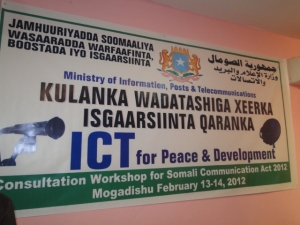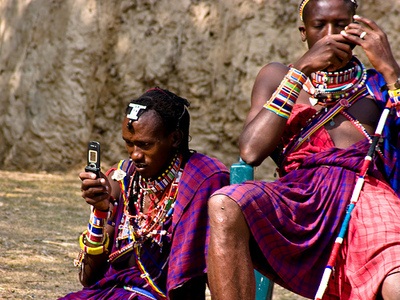The ITU’s newly formed Broadband Commission released its first full report Monday, June 6, 2011, entitled A Platform for Progress. The report highlights the need for governments to adopt national Internet strategies in order to compete in the global market. Broadband Internet access, the report states, should be universally available through the public sphere. Others such as Charles Kenny, researcher at the Center for Global Development, argue that Internet access should be leveraged through the private sector, dictated by market needs.
The report reads, “To optimize the benefits to society, broadband should be coordinated on a countrywide basis, promoting facilities-based competition and with policies encouraging service providers to offer access on fair market terms… Developing isolated projects or piecemeal, duplicated networks is not only inefficient, it delays provision of infrastructure that is becoming as crucial in the modern world as roads or electricity supplies.”

Photo Credit: ITU, Dr Hamadoun Touré, ITU Secretary-General, Vice-Chair, speaks at the Broadband Commission for digital development meeting, Geneva
Some ICT4D experts, however, are not so quick to believe the report’s broad-reaching claims. Charles Kenny, from the Center for Global Development, explains in Foreign Policy that the evidence showing Broadband access increases growth is weak. Looking at data from 1980 to 2006, one unpublished World Bank study estimates that for every 10% increase in Broadband penetration a 1.3% increase in national GDP can be expected. This is a sandy foundation, argues Kenny, for the Broadband Commission’s recommendation that countries develop, invest in and subsidize national Broadband plans. Other studies, not cited by the Broadband Commission, show limited if any growth as a result of increased Broadband access.
I personally corresponded with Mr. Kenny via email last week regarding the role of governments and private companies in National Broadband Networks. His responses are listed here:
1. In your opinion, what is the role of the Internet in fulfilling the MDGs?
The Internet is definitely a factor in speeding progress towards poverty reduction, lower mortality and more widespread educational opportunities. At the same time, the Internet is neither necessary nor sufficient for such progress. Take health: the interventions necessary to dramatically reduce child mortality are things like widespread vaccination, the use of bed nets, breast feeding, and sugar-salt solutions to counter diarrhea. The Internet may be able to help in rolling out these approaches, but that role is decidedly secondary.
2. Where can Broadband have its greatest impact – health, education, governance, economy, or agriculture?
To date, the biggest impact of broadband in developing and developed countries alike has been in entertainment—allowing widespread access to interactive gaming and streaming video. Looking forward, there are surely applications across all of the areas you list, but it is far too early to suggest where the biggest impact will be.
3. Should Broadband services be provided by governments, private companies, or a combination?
Private companies. It is too early to say that there is a big justification for public financing of Broadband networks; we just don’t know if there is a considerable public good impact. Regardless, if the telecoms industry has taught us anything it is that private competitive provision of information infrastructure has lowered prices and extended access far more rapidly than government provision. So even if the government wants to finance broadband network rollout, it should work through the private sector.
4. Should countries pursue a National Broadband Network or leave the market to organically construct networks?
Leave it to the market. Command and control has sometimes, but rarely, worked as a development strategy. But the fast-moving area of ICTs isn’t a good place to try it. Given how little we know about Broadband’s economic and social impact, this isn’t an area where governments should be throwing money regardless.
Despite Mr. Kenny and others’ doubts, the Broadband Commission recommends governments develop their own National Broadband Networks. Their report can be downloaded here.

Photo Credit: CGDev.org
Charles Kenny is a senior fellow at the Center for Global Development. His current work covers topics including the demand side of development, the role of technology in quality of life improvements, and governance and anticorruption in aid. He has published articles, chapters and books on issues including progress towards the Millennium Development Goals, what we know about the causes of economic growth, the link between economic growth and broader development, the causes of improvements in global health, the link between economic growth and happiness, the end of the Malthusian trap, the role of communications technologies in development, the ‘digital divide,’ and corruption.


















































